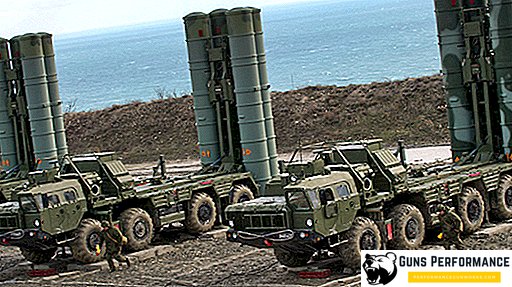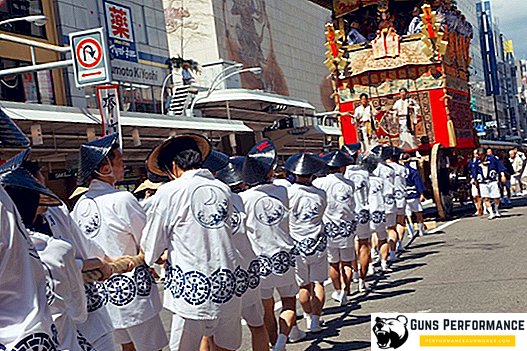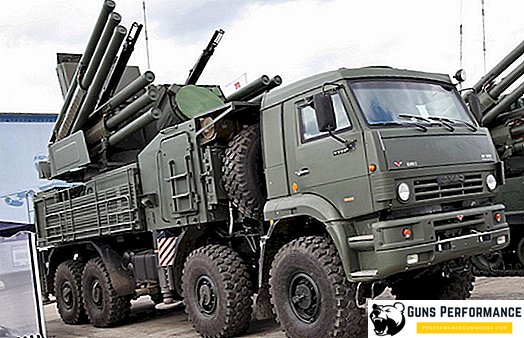The first attempts of a man to leave the limits of our planet are connected not only with the advent of rocket and space technology. The process of creating missiles capable of flying long distances and overcoming the force of gravity, entailed not only the creation of completely new means of transport. A huge land industry, which includes the operating cosmodromes of Russia, the American launch complexes on Cape Canaveral and the French Cosmodrome Kuru, located in equatorial Guiana, are currently working on space exploration. China and Japan have their own launch complexes. Today, almost all space launch sites are marked on the map, whereas more than half a century ago, the launch sites of space rockets were the most secret objects on our planet. More recently, 50-60 years ago, few people had an idea of what should be the place of launch of rockets that were carried away into space.

The subsequent desire and aspiration of people to begin the development of near-Earth space required the creation of special launch complexes designed to ensure the launch of rocket technology. Along with the programs for launching spacecraft and organizing flights into open space, a new direction appeared in the space program - the construction and creation of a ground-based, launching element of the rocket and space infrastructure.
Thanks to the work done by the titanic work of engineers and specialists on both sides of the Atlantic Ocean, who were able to create launch missile systems, today the space launch has become part of the work process of the entire space exploration program.
The first steps of the USSR and the USA on space exploration.
The emergence of nuclear weapons marked the beginning of an arms race - an unprecedented process in modern history associated with the creation and assimilation of new weapons of weapons, carriers of nuclear weapons. The military-political confrontation of the Soviet Union and the United States unwittingly led to the rapid development of the rocket and space industry. Missile technology for the USSR was the only technical means capable of providing an adequate response to the growing military threat from overseas. The economies, the military-industrial potential of the Soviet Union and the United States allowed them to independently implement their space programs. The Third Reich’s missile technology, which the Soviets and the Americans got as trophies, made it possible to significantly speed up not only scientific developments, but also move the production cycle. The military space programs of the USSR and the USA owe their results to many German engineers who were actively involved in the creation of the first ballistic intercontinental missiles.

Created by the efforts of Soviet engineers under the leadership of Sergei Pavlovich Korolev, the first intercontinental ballistic missiles became the prototype of the future space vehicles. The achieved results and new technologies gave a start to the new - rocket-space race, which made both the USSR and the USA for many years leaders among other countries on the way of space exploration.
Needless to say, space exploration began naturally. The rocket-space race was the result of the policies of the leadership of both states, which sought to outrun an opponent by any means. Space gave for this an infinite field for maneuver. Having achieved success in the implementation of space programs, both the USSR and the United States hoped to gain engineering and scientific victory over the enemy, not to mention the political importance of rivalry.
The US and USSR defense departments' disposal sites for testing rocket technology did not allow large-scale programs to launch spacecraft into space. The full-fledged US cosmodromes began to be built almost simultaneously with the start of similar work in the Soviet Union. Planned for use in space exploration, the American Jupiter rocket and the Soviet rocket, created on the basis of the intercontinental rocket P 7, needed powerful launch complexes that would provide the entire pre-flight training cycle and the rocket launch itself. When building a launch pad for an intercontinental missile, the Soviets and Americans used German experience in building launch sites in Nazi Germany, from where German V-2 ballistic missiles flew.
Even then, it became clear to Soviet engineers and their American colleagues that a tremendous amount of work had to be done. It was necessary to build not only the starting place, but also to create a huge engineering and technical complex, including:
- directly start table itself;
- warehouse hangars and assembly shop;
- fuel storage;
- security and safety systems;
- points of control and management of missile launches;
- energy supply system and transport infrastructure.
It is necessary to take into account the fact that the construction of a facility of such magnitude will be carried out in desert and uninhabited areas, where there is no established transport network, and no sources of energy supply. It was necessary to create from scratch an enormous industrial and technical complex capable of autonomously servicing subsequent launches while taking into account and calculating the areas of the expected fall of the spent stages of a space rocket.
Such areas were found both in the USSR and in the USA. To date, the territory of the Russian Federation has two of its own cosmodrome - Plesetsk and Vostochny, built recently in the Far East. The famous and legendary Baikonur, located on the territory of Kazakhstan, Russia is forced to rent.

Construction of spaceports in the USSR
The construction of platforms for launching space delivery systems was preceded by long and painstaking preparatory work. In the USSR, the test site of the Ministry of Defense "Tyura-Tam", located on the territory of Kazakhstan, became the first place for the launch and forerunner of spacefronts of the future. The choice of location was not random. Deserted and deserted terrain perfectly suited for such risky and complex activities, which were the launches of the first missiles. Moreover, such an arrangement of the launch complex allowed the launch at the start of the natural astrophysical parameters of the Earth’s rotation, which made it easier for the launch vehicle to overcome the force of gravity and successfully deliver space vehicles. It should be noted that the place was chosen in view of the military-political situation in the world at that time in the world. The new facility was built in the strictest secrecy, and therefore should be located on the territory located in the interior of the country, at a considerable distance from the state border.

Construction of the new launch complex began in early 1955. Officially, the date June 2, 1955 was the birthday of the world's first cosmodrome. Construction was carried out at an intensive pace, so after two years in May 1957 a new launch complex was submitted to the state commission. Soviet rocket R-7 was installed on the launch pad and ready for the first launch for peaceful purposes. All subsequent space rockets, including the legendary Vostok rocket, which launched the first manned spacecraft into near-earth orbit, were created on the basis of these launch vehicles in the Soviet Union. From this moment begins the glorious history of the Soviet space program. Despite the first unsuccessful launches, on October 4, 1957, a rocket with the first PS-1 artificial satellite of the earth went off from the launch pad of the new cosmodrome.
When analyzing the Soviet space program, it is important to consider the following aspect. The new cosmodrome, although in fact belonged to the military department, was built exclusively for the implementation of Soviet space programs. At the beginning of the construction of the rocket and launch complex, the object was assigned a troop number, and the cosmodrome itself taught the status of a military testing ground.

The new launch site, together with the adjacent city of Baikonur, has become one single rocket and space complex, Baikonur. In the West, the Soviet space center for a long time continued to be called "Tyuratam". In less than 50 years from all launch sites of Baikonur, more than one and a half thousand spacecraft of various purposes have been launched. From here, test launches of newly created intercontinental ballistic missiles were carried out.
The Soviet spaceport gave way to life and the first manned flights into space. After the successful launch of the Sputnik-1 rocket on April 12, 1961, the Vostok launch vehicle with cosmonaut Yuri Gagarin went off to the sky from Baikonur. Began intensive use of the new launch complex for military and peaceful purposes. In the future, the launch of all manned ships in the USSR and in the Russian Federation was carried out and continues to be carried out mainly from this cosmodrome.

At the moment there are the following objects of the Baikonur Cosmodrome:
- 9 full launch complex, including up to a half dozen launchers;
- launchers for launching ICBMs;
- assembly and test facilities;
- complexes for pre-launch preparation of rocket technology and apparatus;
- chemical plant for the production of rocket fuel;
- 3 gas stations;
- measuring and computing telemetry station for control and flight control of launch vehicles;
- power station, network of transformer substations and up to 6000 km of power lines;
- nodes and communication lines with a length of 2700 km;
- road and rail network;
- two airfield.
The total area of the entire complex is more than 500 km2. The work of the huge mechanism is provided by personnel, with a total number of 10-15 thousand people, for whom a whole space town was built with all the necessary social infrastructure.
The implementation of the military-technical support of the Soviet nuclear missile potential went in a different direction. For these purposes, in 1957, it will be decided to build a test cosmodrome in Plesetsk. The object received the code name "Angara", becoming for the first time the first part of the missile, armed with intercontinental ballistic missiles. Only in 1964, on the basis of this rocket part, was created a research testing ground for testing and using military and space delivery vehicles.
Despite the fact that the Baikonur Cosmodrome is even the largest launch complex on the territory of the former USSR, it was Plesetsk that became the main launching pad from which rocket launches were carried out. Plesetsk became the main launch site of almost all Soviet automatic spacecraft used to study near-Earth space and space objects. In the period from 1966 to 2000 alone, the cosmodrome became the starting point for more than a half thousand launch vehicles.

Space centers of the USA and other countries of the world
The first US spaceports were launch sites of the military air base at Cape Canaveral, eventually converted into a huge rocket and space complex. It was from here that the giant launch vehicle Saturn-5 started, in July 1968, delivered the Apollo 11 spacecraft to the moon with three astronauts on board.

The state of Florida has become the center of the United States rocket and space industry. Over time, for the implementation of the Apollo lunar program, a new space center named. Kennedy, who in its scale left far behind all the existing space launch sites in the world. The area occupied by the entire complex is 575 square meters. kilometers All subsequent manned launches, including flights of the American reusable space shuttle ships, were carried out from the sites of this space center. Launch complex at Cape Canaveral was used to launch unmanned spacecraft.












